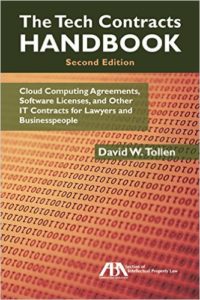Creating software has become comparatively easier than it was before. Rapid adoption of smartphone technology has increased our dependence and inclination to use smartphones for apps. This has spawned a new generation of entrepreneurs who can get their ideas and products to market in months and later scale based on response. But tech contracts and laws remain a dense subject for most of these entrepreneurs.
For all the technology advancement and ease of doing and launching business, understanding laws and defending against unforeseen and unintentional setbacks have remained difficult. New startups are getting the stick for not complying to rules or for not thinking ahead. These new businesses then find themselves in a soup because they didn’t add the necessary clauses to their contracts. Or worse, must face lawsuits and fines from customers against harm or damage.
But reading and understanding those contracts is an uphill task for someone who does not have a background in law. In The Tech Contracts Handbook, David W. Tollen explains these confusing aspects of contracts and makes understanding these legal necessities easy.
David earned law degrees from Harvard Law School and Cambridge University in England, as well as a B.A. in history from U.C. Berkeley. He’s the founder of Sycamore Legal P.C., a San Francisco technology and intellectual property law firm. He also provides training and expert witness services related to negotiating and drafting IT contracts.
 The Tech Contracts Handbook: Cloud Computing Agreements, Software Licenses, and Other IT Contracts for Lawyers and Businesspeople
The Tech Contracts Handbook: Cloud Computing Agreements, Software Licenses, and Other IT Contracts for Lawyers and Businesspeople
Author: David W. Tollen
Paperback: 275 pages
Publisher: American Bar Association; 2 edition (January 7, 2016)
ISBN: 1634251784, 978-1634251785
The moment you think of doing business, terms and conditions of doing the business take the center stage. Whether you are a software manufacturer, or a software development service provider, you need to understand your liabilities and obligations to all the parties involved in the business.
Arrangements with your suppliers, and conditions of use for customers and distributors are an important part of most software related businesses. In Introduction, the author explains the different types of contracts that a software developer or a technology entrepreneur must know about. He explains to the reader how to read the contracts that they sign and the typical clauses that form a standard contract.
Many young entrepreneurs are passionate and consumed by the idea. Going into business with people you know often put contracts and agreements on the back burner as executing the idea takes precedence. The author highlights the drawbacks if this approach. But he also explains that contracts are not made because you don’t trust others or because you want to go to court and hurt the other party. In his view, contracts represent a concrete picture of what you intend to do and who is responsible for what.
People are usually also caught up in the idea of what is fair. For young entrepreneurs, the author’s advise is to focus on what’s the best available option rather than to think if something is fair or unfair. A marketing company charging a huge sum to a software developer may seem unfair to the developer, but the question that she needs to ask is whether she can get another marketing company that can deliver the same results at a lower cost.
The author offers similar advice throughout the book based on the lessons learned from his years of experience in drafting contracts for leading software organizations.
One of the most important agreements that technology entrepreneurs need to think of is the right to reproduce the software and the rights to use. The first part of the book focuses on these crucial contracts that he calls the Prime Clauses of a software or service agreements. The author touches on every important aspect from distributor restriction to subscriptions to the aspects of professional services for service providers.
In General Clauses the author spends a lot of time explaining the all important Indemnity clauses and the wording the business owner should get right. Through examples and individual portions of contract snippets, the author stresses the importance of customizing your contracts based on your business model.
In summary, The Tech Contacts Handbook is an excellent resource to understand the legal contracts and agreements that a technology entrepreneur must have in place. You can read the Introduction to get the gist of different contracts and decide which ones you need to worry about. The reader can then drill down in to each type of contracts and look at different clauses and learn how and why they need that specific part in their contracts.
With definitions, real-world scenarios and boiler-plate clauses and contracts, The Tech Contracts Handbook is a resource that every technology entrepreneur must have at hand to understand the liabilities and decode what their lawyers are fussing over. The book covers everything from businesses that work in a traditional software development environment to the new Software as a Service and Cloud services environment.